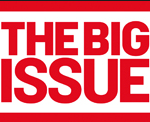After a short break at the end of exams, the new term of the IBCoM department started again last week! Checking Blackboard for the course guide and chatting with your classmates about the assignments helps us to come back into the school mode. It’s stressful to get up early for school and to prepare for the classes, but in some way, refreshing yourself with new courses and new professors is overwhelming too.
Thus, for today’s blog post, as a warm up for our struggle in the second term courses, I would like to introduce an interesting type of marketing that could also be applied to our real lives! As the title indicates, the subject I want to talk about is Cause Related Marketing! You might have never heard of this term, but I am sure that you will be interested to hear about it as an IBCoM student. So what is Cause Related Marketing?
Cause Related Marketing is quite different from the normal marketing process, as it is connected with social issues and causes, such as helping social minorities, preserving endangered animals and many more issues. Cause Related Marketing is a marketing process that requires businesses and charities to form a partnership in order to market an image, product or service for mutual benefits. It may sound similar to Corporate Social Responsibility (CSR), as both of them are related to the social actions and the needs of society. However, Cause Related Marketing (CRM) is different from CSR in that it’s not simply about social initiatives from corporations, but it has to have direct effect when the customer buys a certain product.
CRM was first introduced by Jerry Welsch, the marketing staff of American Express (AMEX) in 1983. It started as a ‘Statue of Liberty Restoration Project’: when a customer applied for a new creditcard, 1$ was automatically donated to the project and when customers paid with their cards, 1 dollar cent was donated. This successful initiative was the starting point of CRM, as other brands and corporations started to put effort into these kinds of causes as well in order to benefit their social reputation. To further help your understanding of Cause Related Marketing, I have several well-known examples from your daily lives.
- Lush – Charity Pot
Lush is a well-known UK cosmetic brand, which only uses organic and natural ingredients to create hair and body products. It is known for the colorful visuals and strong scents that help you recognize a Lush store from far away. But, did you know that Lush has been continuously working on Cause Relating Marketing by launching a special product, called ‘Charity Pot’? The Charity Pot usually consists of Lush’s signature body cream or hand cream and has an image of the organization or the cause on it that will receive a part of the revenue. So when you purchase one Charity Pot, 100% of the revenue is donated to a specific cause or social issue, like funding a farmer’s market, supporting the Women’s Empowerment International Organization or saving endangered whales.
- Big Issue – a hand up, not a hand out
When walking on the streets anywhere in Europe, you could have spotted this man with a red vest, holding a magazine. They might look like beggars from the outside, but in fact, they are the official ‘The Big Issue’ vendors. The Big Issue is a UK magazine company initially established to help and promote the lives of homeless people. When a homeless person sells one magazine on the streets, he can keep half of the revenue. With this money, he is able to maintain his daily life without begging for money and it also helps him to save money for future financial independence.
- Toms – One for One

Toms shoes is also a famous example of Cause Related Marketing. Toms is an American shoe brand, which was launched by Blake Mycoskie. When Mycoskie was traveling in Argentina, he noticed many kids walking around on the streets without shoes on their feet. He thus launched the One for One project at Toms shoes. Toms’s flat shoes are popular for their simple, yet trendy, designs, but they are more famous for their special campaign method: when you buy a pair of shoes at Toms, the same pair is given to poor children. Consequently, customers are more likely to buy shoes from Toms, as they feel better about their purchase knowing that they donated to a good cause.
- Pizza Express -Venezian Pizza

Pizza Express is England’s franchise pizza restaurant with over 350 branches worldwide. It looks like a plain Italian restaurant from outside, but their special menu, called ‘Veneziana’, is a menu that helps solve the pollution issue in the Italian city of Venice. When people order this menu, 25 cent is donated to the ‘Venice in Peril’ project, which is a project to save Venice from sinking under water level. This marketing method was successful in increasing social awareness of the environment issue of Venice and also in promoting a positive brand image of Pizza Express.
All these are examples of Cause Related Marketing that are already being acted in our daily lives. I hope this information helps you when you consider buying a certain product in the near future. By always keeping CRM in mind as a consumer, you will be able to change the world, one small purchase at a time!





